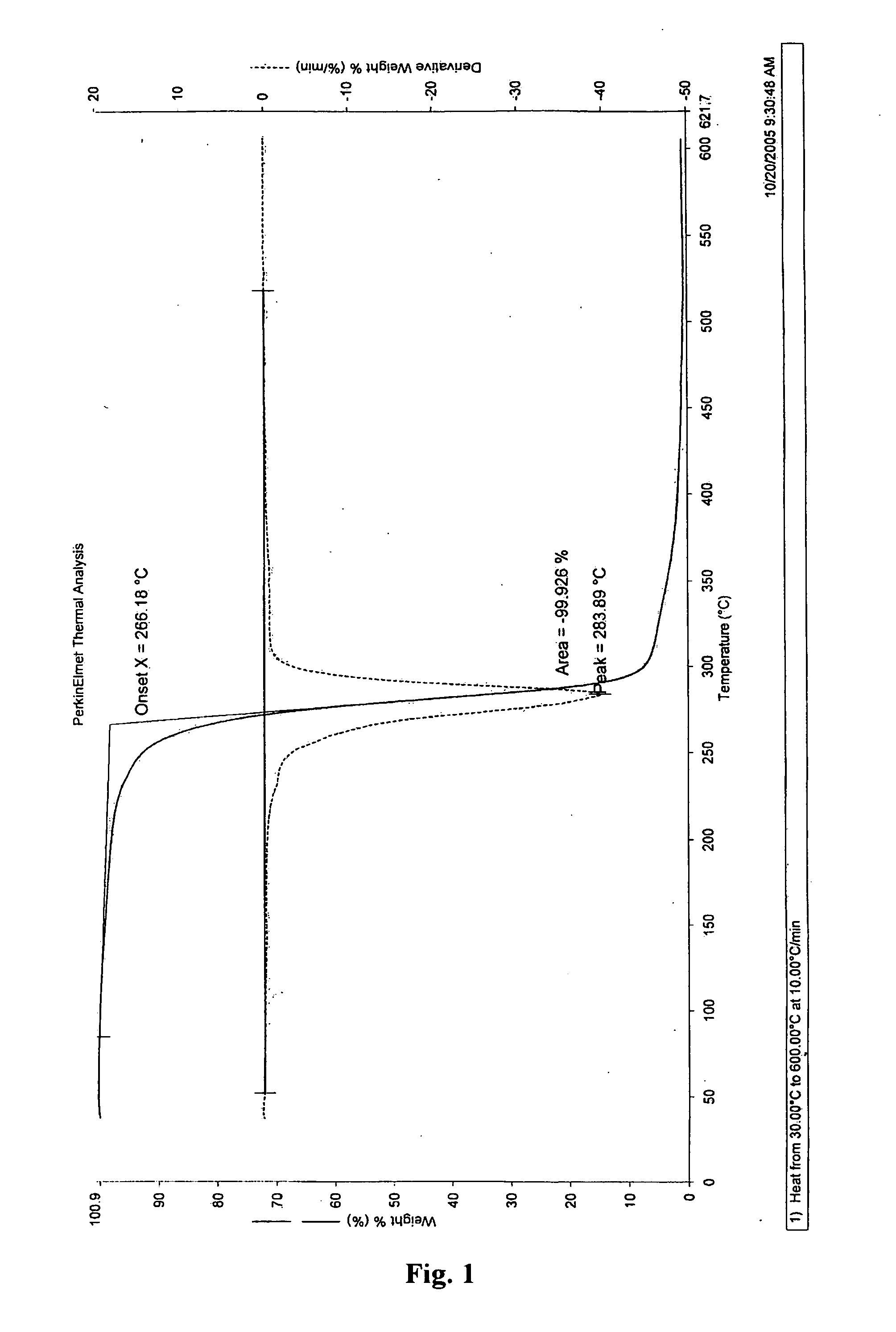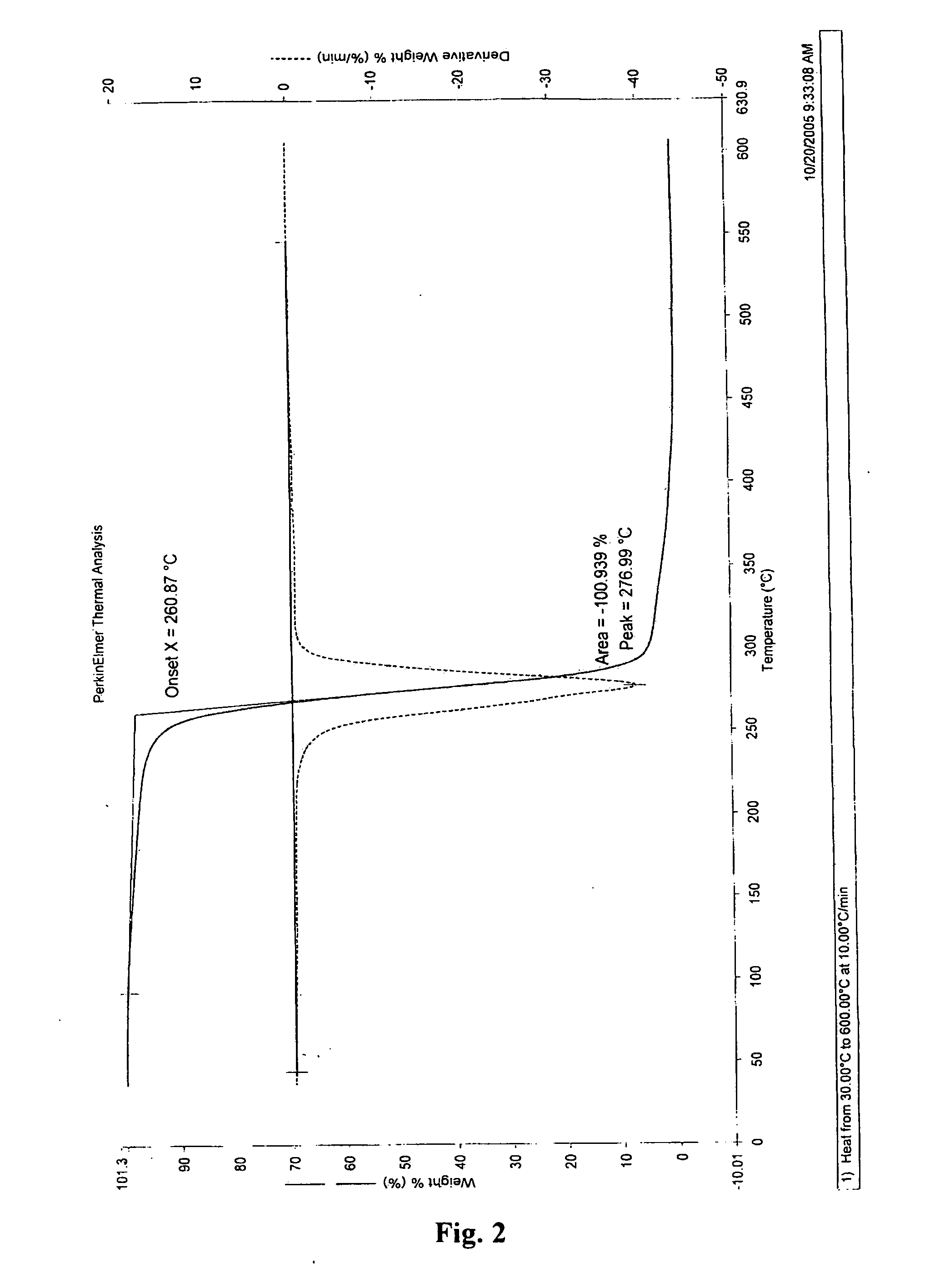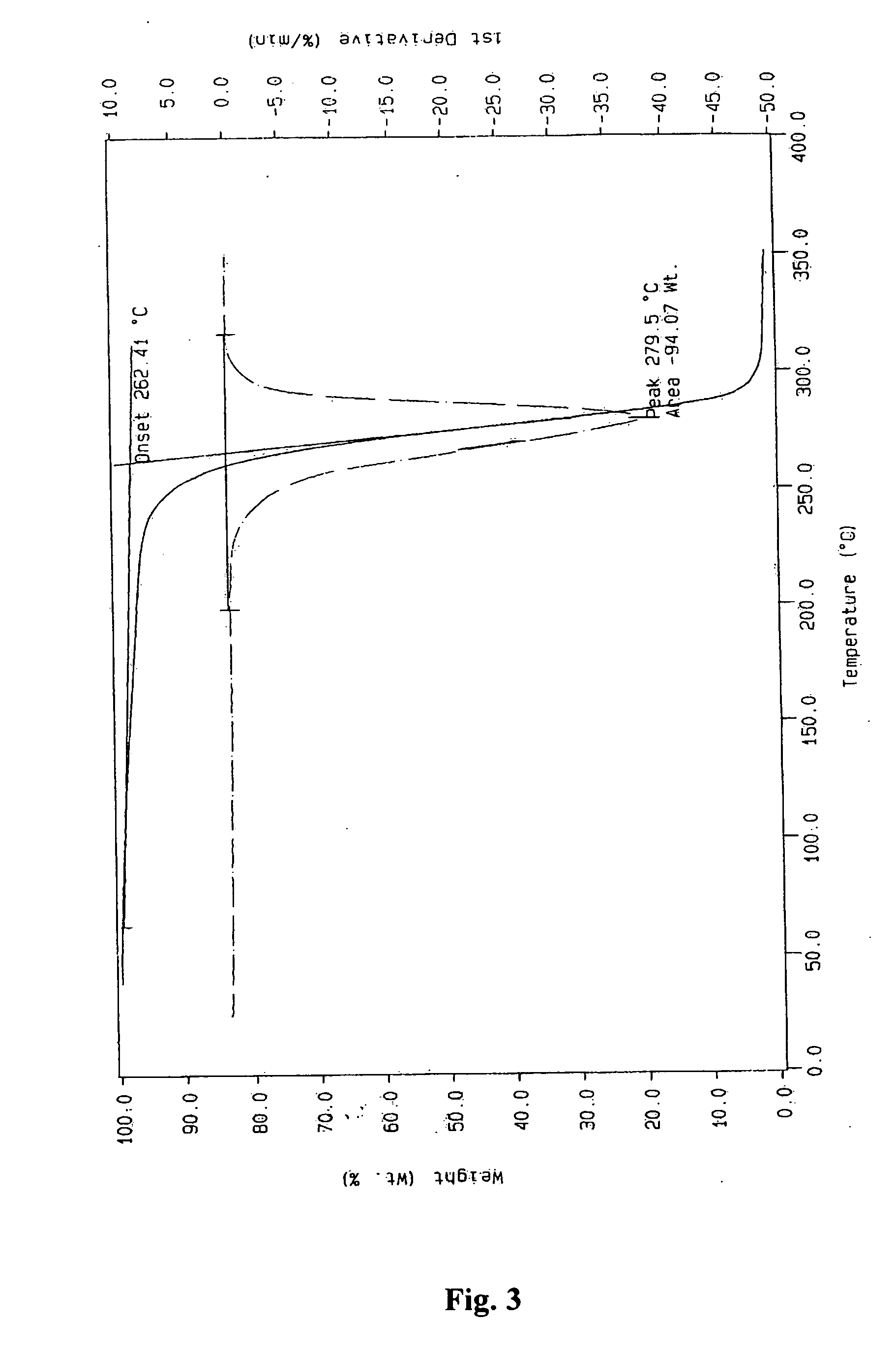Polymeric end-capping reagent for carbon dioxide-epoxide copolymers and a method for preparing the same
- Summary
- Abstract
- Description
- Claims
- Application Information
AI Technical Summary
Benefits of technology
Problems solved by technology
Method used
Image
Examples
example 1
[0039] A 250 mL three-necked flask equipped with a constant pressure dropping funnel was vacuumed, and purged with nitrogen gas. Then 1.84 g of purified maleic anhydride and 15.4 g of anhydrous toluene were put into the flask under a nitrogen atmosphere. As the inner temperature of the flask was kept at 85° C., under a vigorous stirring, a solution of methyl methacrylate (16.92 g) containing 0.094 g of benzoyl peroxide was added dropwise through the constant pressure dropping funnel over 30 min. Copolymerization was carried out at 85° C. for 7 hours. After the reaction was completed, the reaction mixture was distilled under a reduced pressure at 110° C. until no distillate dropped out. Then the reaction mixture was transferred into a vacuum oven and dried at 120° C. till a constant weight. Thus, 15.8 g of a white copolymer end-capping reagent having a Mn of 43,000 and a distribution index of 1.8 was obtained.
example 2
[0040] A 250 mL three-necked flask equipped with a constant pressure dropping funnel was vacuumed, and purged with nitrogen gas. Then 4.90 g of purified maleic anhydride and 25.10 g of anhydrous toluene were put into the flask under a nitrogen atmosphere. When the inner temperature of the flask was kept at 85° C., under a vigorous stirring, a solution of n-butyl acrylate (25.63 g) containing 0.153 g of benzoyl peroxide was added dropwise through the constant pressure dropping funnel over 40 min. Copolymerization was carried out at 85° C. for 8 hours. After the reaction was completed, the reaction mixture was distilled under a reduced pressure at 120° C. until no distillate dropped out. Thereafter, the reaction mixture was transferred into a vacuum oven and dried at 120° C. till a constant weight. Thus, 28.9 g of a white copolymer end-capping reagent having a Mn of 41,000 and a distribution index of 2.3 was obtained.
example 3
[0041] A 250 mL three-necked flask equipped with a constant pressure dropping funnel was vacuumed, and purged with nitrogen gas. Then 1.54 g of purified maleic anhydride and 28.1 g of anhydrous toluene were put into the flask under a nitrogen atmosphere. When the inner temperature of the flask was kept at 90° C., under a vigorous stirring, a mixed solution of n-butyl methacrylate (8.96 g) and methyl methacrylate (23.69 g) containing 0.171 g of benzoyl peroxide was added dropwise through the constant pressure dropping funnel over 60 min. The terpolymerization was carried out at 90° C. for 7.5 hours. After the reaction was completed, the reaction mixture was distilled under a reduced pressure at 120° C. until no distillate dropped out. Thereafter, the reaction mixture was transferred into a vacuum oven and dried at 120° C. till a constant weight. Thus, 27.7 g of a white terpolymer end-capping reagent having a Mn of 51,000 and a distribution index of 2.5 was obtained.
PUM
| Property | Measurement | Unit |
|---|---|---|
| Temperature | aaaaa | aaaaa |
| Temperature | aaaaa | aaaaa |
| Fraction | aaaaa | aaaaa |
Abstract
Description
Claims
Application Information
 Login to View More
Login to View More - R&D
- Intellectual Property
- Life Sciences
- Materials
- Tech Scout
- Unparalleled Data Quality
- Higher Quality Content
- 60% Fewer Hallucinations
Browse by: Latest US Patents, China's latest patents, Technical Efficacy Thesaurus, Application Domain, Technology Topic, Popular Technical Reports.
© 2025 PatSnap. All rights reserved.Legal|Privacy policy|Modern Slavery Act Transparency Statement|Sitemap|About US| Contact US: help@patsnap.com



